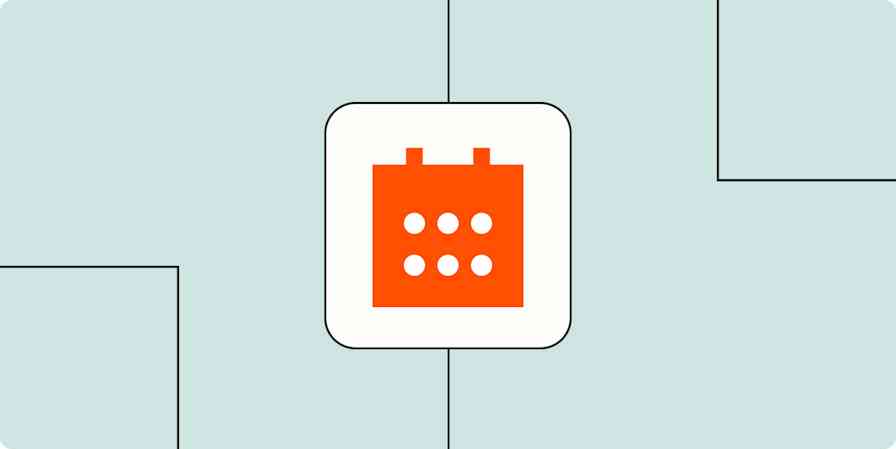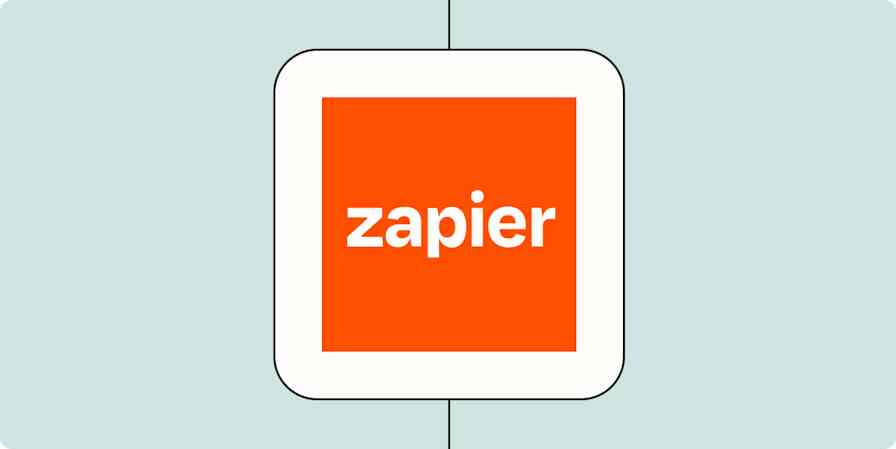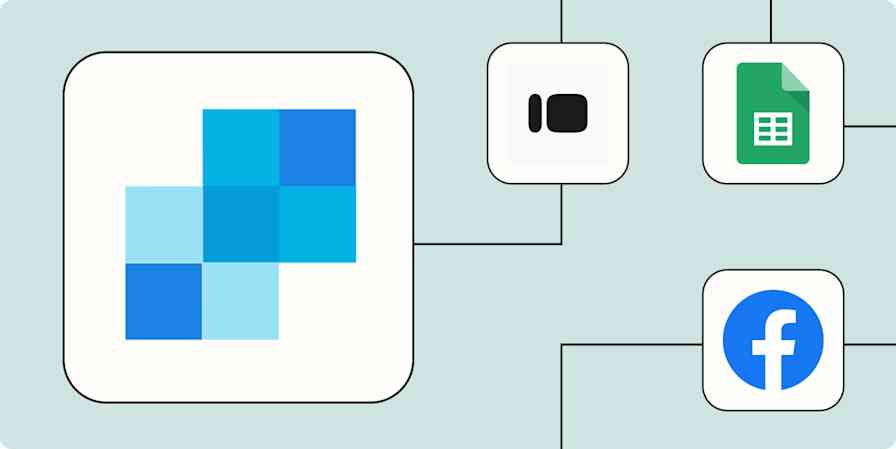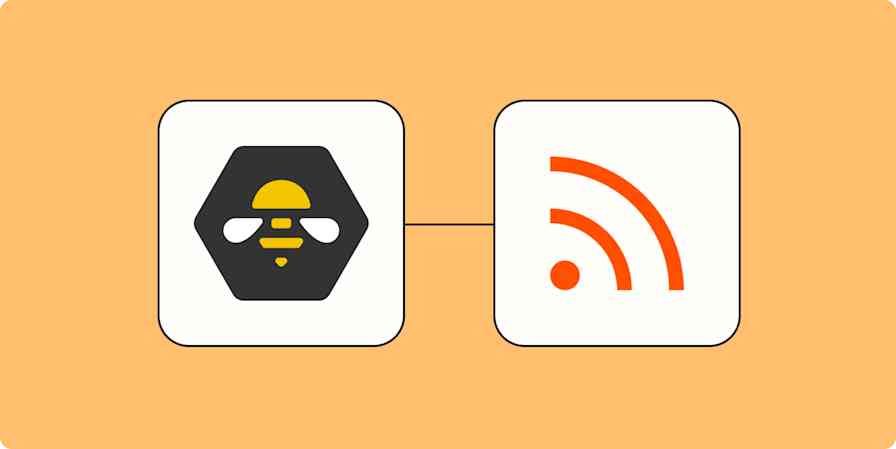As a senior technical support specialist at Zapier, I have more than 10 years of experience assisting users who want to make their tech work for them rather than the other way around. When I interact with these folks, they're almost always laser-focused on solving a particular problem—using automation to reduce friction for customers, for example, or to share data across the enterprise.
Solving a single problem is always a win, and I'm not here to knock it. But I think automation really shows its value when it begins to improve repeated processes and boost efficiencies in areas that might not even be recognized—yet!—as chokepoints.
Because once you make the investment in automation tools, there may be dozens, if not hundreds, of opportunities to use them in every aspect of your company's work. You just need to know where to look for that next automation opportunity.
This post was developed from a session given by David Leszcynski, at ZapConnect 2023, Zapier's annual user conference. Watch the full session in the video below.
Step 1: Evaluate your time
In the effort to uncover automation opportunities, a good place to start is by stopping. I mean it.
In our go-go world, the pressure to get things done means we often don't take time to evaluate what we're doing and how we're doing it. Now, I know that sometimes it might feel as if stopping means defeat, but I disagree. Evaluating the best way to accomplish your goal rather than jumping in headfirst will save you time in the long run.
That's why the first thing I tell people who want to leverage their automation investment is, don't be afraid to put a project on pause for a moment. Time and again, I've seen the proof—when you evaluate where you're going and how you're getting there, you'll surely save time in the long run.
A process may "work," but if you're repeating many manual tasks every day, day after day, week after week, the inefficiencies compound like interest on a loan.
But if you stop for an hour to build an automation, it reduces time spent every time you use it. So if it saves six minutes per task, five times a day, that one hour you originally invested returns 120 hours saved over the course of a year. Three weeks! It's completely worth it.
Now, this begs the question, do you know where you're spending your time?
Track your time to spot the inefficiencies
Are you so busy getting things done, you're not even aware there's a better way to do it? One way to discover new automation opportunities is to track your time and look for the logjams.
There are several apps and services out there that you could utilize to track where you're spending most of your time. Are you spending a lot of time on a specific app or logged into a specific website? Do you burn through hours communicating with colleagues, sharing data with other departments, or providing clients with updates? Tracking your time by activity or project might reveal where you can automate a task.
If you've been in your job for a while, look at past projects. Most to-do and project planning apps will have some sort of log that shows you all of your past tasks. Take a look at how long these old projects took and remind yourself which tasks you were hung up on.
Oftentimes, you'll find the 80-20 rule applies—80 percent of your effort goes into just 20 percent of your work. That's the next opportunity to use automation!
Read more: How to automate your to-do list
Step 2: Automate your habits
We often think about building new habits to improve our work, but psychologists tell us that our brains are lazy and will prefer to repeat bad habits rather than discover new ways of accomplishing our tasks. In a very real sense, we can think of these habits as our daily weaknesses.
Let's say you tend to work through lunch because you've felt you needed the extra time to complete your tasks. But think like a scientist and test that hypothesis!
What if you used automation to send yourself a daily Slack message with a reminder that taking a break from work to get a bite to eat provided you with better energy and focus in the afternoon, enabling you to be more efficient? These kinds of automated nudges can be applied throughout the day to break habitual routines that no longer serve you. Use this Zap template, one of our pre-made workflows, to set it up now:
Get started now: How to automate healthy work habits
Or maybe you're not a morning person. Try an automation that takes upcoming appointments on your calendar and tasks from your to-do app and feeds them into ChatGPT, which returns an itinerary that matches task efforts and appointments with your own energy levels throughout the day.
Learn more: How to build your own calendar assistant GPT
Step 3: Revisit past mistakes
The Roman God Janus (for whom we named the month "January") was a two-faced deity who looked forward and backward. We need to adopt this Janus-like approach to uncovering automation opportunities. To prepare for a better future, we need to understand the past.
Think for a moment—when you were reviewing your old tasks and projects for automation opportunities, were there any that didn't go particularly well? And was there a pattern you could discern?
For example, was there a breakdown in communication? Were some tasks not completed on time? If so, there's an opportunity to automate to ensure the best possible outcome going forward.
Don't let a lack of preparation derail your goals. Take advantage of Zapier Interfaces to create a shared timeline so everyone working on a project is aware of what everyone else is doing.
Or create a form and interface for your teammates to report issues, which could then trigger emails or messages to be sent out in Slack or Teams, and then create a ticket in Jira or Zendesk.
Learn more: How to create an internal bug reporting hub
Perhaps another way of thinking about this is to prepare for a problem before it happens. There's no way to exactly predict what's going to happen, but preparing for how you'll handle a sudden out of office or loss of a vendor ahead of time is key. Creating automations that help you pivot just might save the day.
Step 4: Ask your team
Finally, don't try to uncover automation opportunities all by yourself.
The myth of the solitary creative genius is hard to shake, but research shows that creativity and discovery are often interpersonal qualities. We know how helpful it can be to bounce ideas off another. Make that part of your automation planning process.
You're not in this alone. Talk to your peers, your teammates, and managers. These folks are with you day in and day out. Maybe they've noticed a task that the team struggles with or could be improved. You could also ask them for feedback. Maybe you could use that form and Interfaces approach to aggregate ideas.
Automating and refactoring your workflow can be a group project all by itself. That gets everyone on the same page and also lets your team become more aware of how each individual contributes.
Enabling automation with Zapier
Now let's talk more about accomplishing these goals with Zapier. Here are some questions we frequently field in customer support.
Where do I start?
We never want you to pay for more than what you need, so the free plan is a great place to solve that first obvious automation issue. But to utilize and take advantage of everything that Zapier has to offer—filters, multi-step Zaps, or integrations with premium apps—you'll want to explore the capabilities of our paid plans.
A great way to experience the power of these tools is to take advantage of the two-week trial period, which lets you check out almost all of the features of the professional plan.
This will also give you a good idea of how Zapier can benefit your team. Our Team and Company plans offer more users, security options, and top-notch support when you have a question.
How do I build my first automation?
Getting started with building a Zap has never been easier. One way is to check out prebuilt Zaps, which are available in our App Directory on individual integration pages. For example, visit https://zapier.com/apps/slack/integrations and scroll down to the Zapier templates section.

There, you'll find dozens of Slack-related Zaps to try out. If you find one that fits your needs, just click on it to give it a try. With more than 6,000 apps on Zapier, there's likely a prebuilt Zap that will save you time.
From the same page, you can also pair two apps together. For instance, you can pair Slack with Trello and see all the ways we've thought to integrate them. There's no use reinventing the wheel, right?
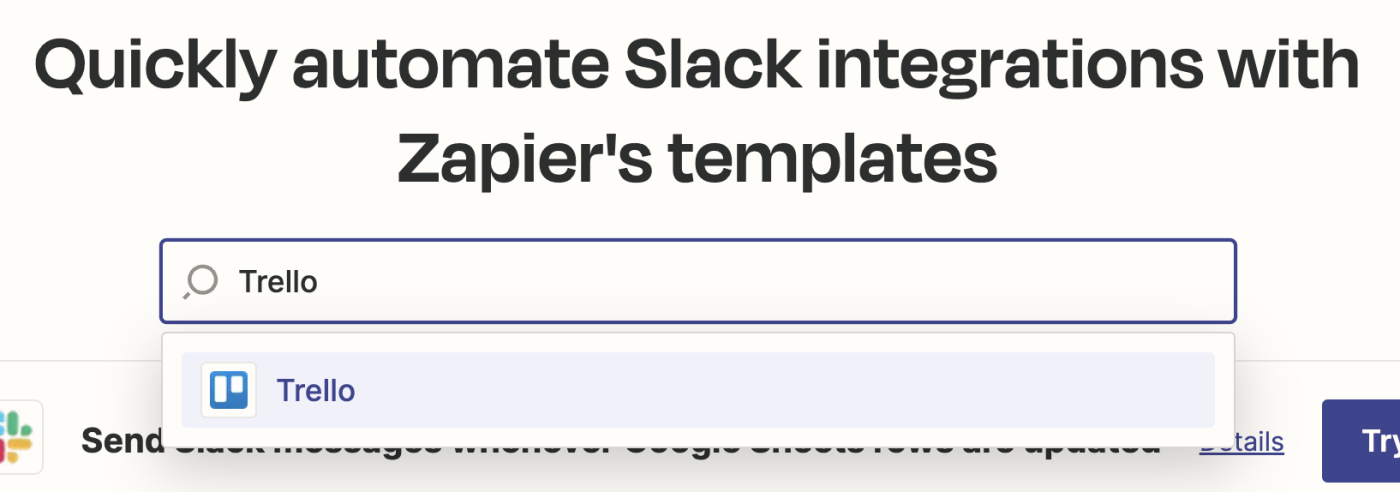
But maybe your particular wheel hasn't been invented yet. Utilizing ChatGPT and AI, we've launched the AI Guesser, which allows you to simply type in what you want the Zap to do and then builds it for you. If it's not exactly what you need, don't worry—you can still add steps or make changes after the Zap's been built.
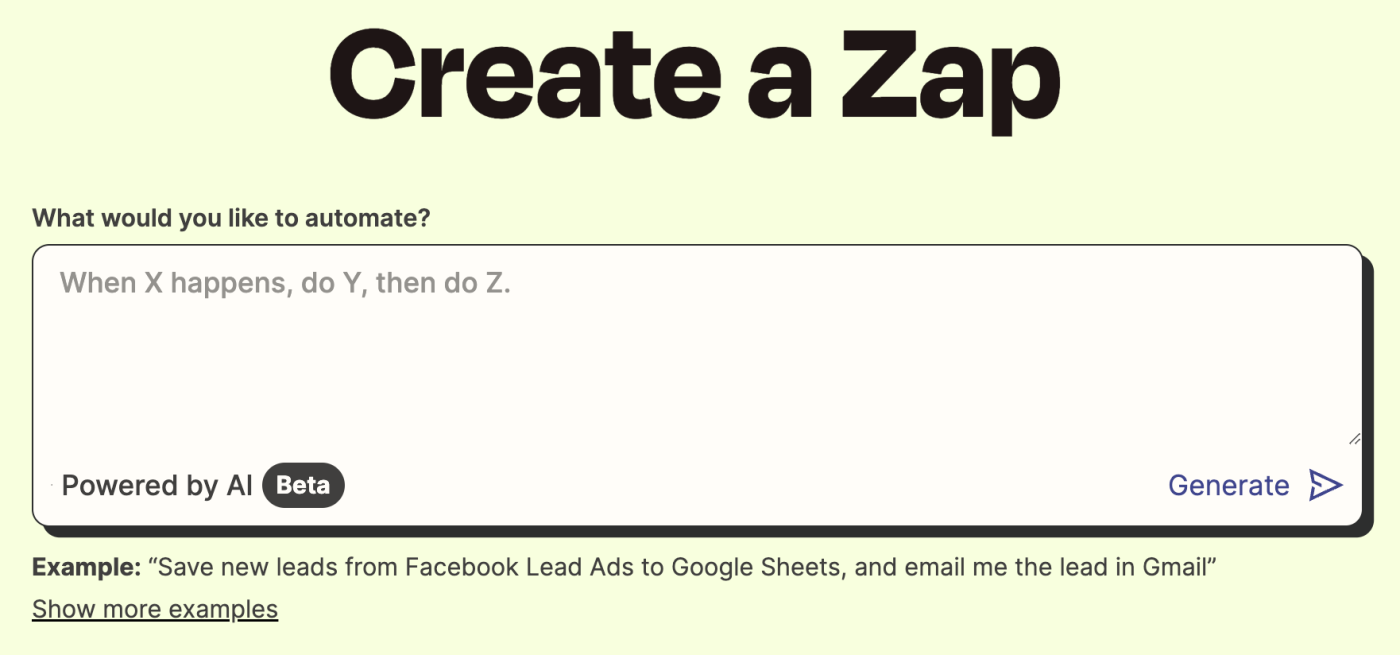
How can I manage and monitor my new Zaps?
With Zapier, you can build a self-monitoring solution—a Zap that manages your automations. Utilize the Zapier Manager option to set up a custom watchdog that DMs you in Slack or sends you an email when there's a failed Zap run. Or maybe it sends you a text using SMS by Zapier when there's an error from one of your integrations. Think ahead and build the alert system that works best for you.
Send Slack notifications if your Zaps run into errors
What if I need something custom or unique to my team?
Zapier already integrates with over 6,000 apps and services, with more being added all the time. But what if you need something customized or specific? We have a utility for that. Take a look at Code by Zapier, made even better recently with the addition of AI.
If you discover that you need a custom code step, AI will help you write your code in either Python or JavaScript to meet your needs. No longer do you have to be a professional programmer to make your Zaps work for you in the best way possible, making the possibilities for automation endless.
As a member of the support team, I'd be remiss if I didn't end with a plug for our services. As you think about building workflows using Zapier, if you run into any trouble, please don't hesitate to reach out to us, watch some of our YouTube videos, or post in the Zapier Community. There are countless opportunities to learn more.
So, what will you automate next?


